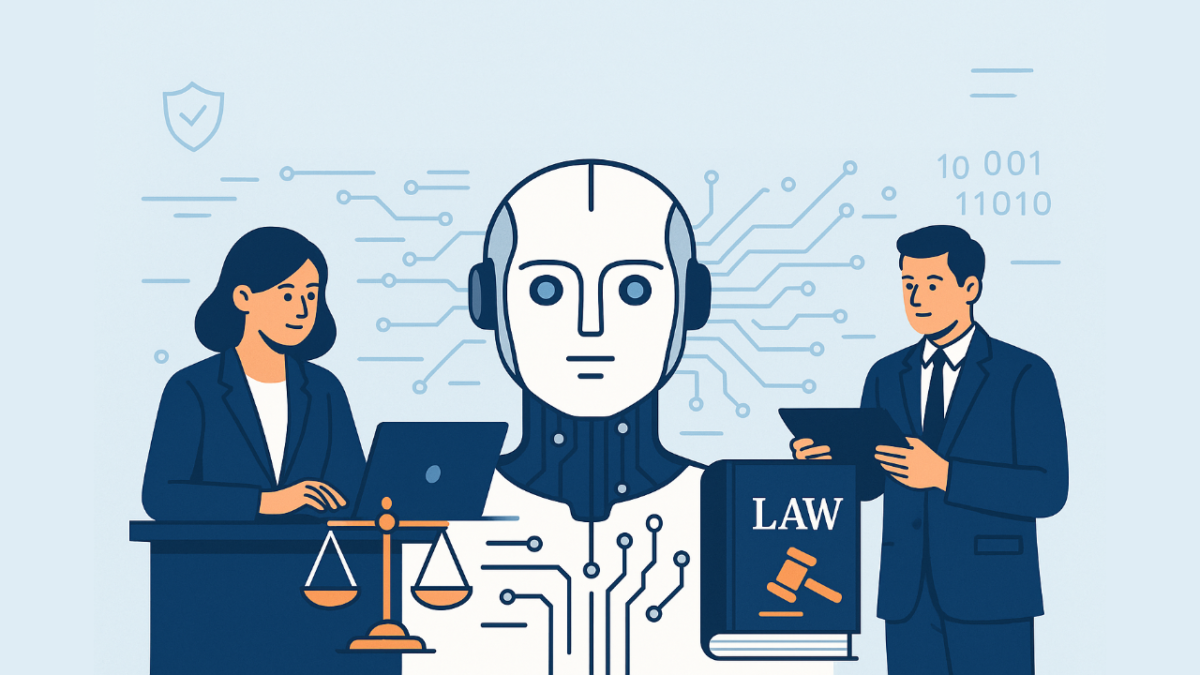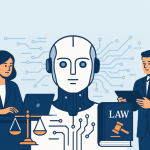Key Takeaways
- AI significantly reduces the manual labor required to draft demand letters, freeing legal professionals to focus on core advocacy and reducing the likelihood of costly errors or oversights.
- Automation ensures that legal documents are consistent and compliant with industry standards on every iteration, raising overall quality and reducing risk.
- Cutting-edge AI tools are democratizing high-end legal technology, enabling even small or solo law practices to compete on equal footing with larger firms through access to reliable and affordable drafting capabilities.
Artificial Intelligence (AI) is transforming the legal industry by enhancing the drafting of demand letters, which are crucial for resolving legal disputes and negotiating settlements. Traditionally time-consuming, this process now benefits from AI integration, improving precision and efficiency while reducing errors. With tools like AI demand letter, legal professionals can automate document creation, ensuring faster, more reliable, and tailored communications that meet legal standards. This technological shift allows attorneys to focus on client representation and strategy, ultimately benefiting clients with quicker and more effective resolutions while saving valuable time and resources.
The Role of Demand Letters in Legal Practice
Demand letters play a crucial, foundational role in the legal system. They serve as the initial formal communication in most legal disputes, outlining a party’s grievance and articulating precise demands for remedy, such as monetary compensation, specific actions, or policy changes. Beyond serving as an official call for restitution or corrective action, demand letters often help clarify disputes and lay the groundwork for productive negotiations. Effective demand letters establish both the factual and legal basis for a claim, detailing the actions (or inaction) that prompted the grievance, summarizing supporting evidence, and specifying the terms for resolution. Their structure, clarity, and professional tone can significantly influence the likelihood and terms of a settlement, making these documents critical leverage tools in the hands of skilled legal professionals. As such, meticulous preparation, coherent reasoning, and persuasive narrative are essential to ensure the demand letter accurately captures the client’s position while inviting constructive dialogue.
Challenges in Traditional Demand Letter Drafting
Traditional demand letter drafting poses several challenges for legal practitioners. The process typically begins with meticulous research to ensure that every factual and legal element is included, followed by multiple rounds of editing to verify formatting, argument strength, and compliance with professional standards. For busy law firms and solo practitioners alike, this means hours can be consumed per document—time that could otherwise be allocated to direct client representation or case analysis. Additionally, human drafters, regardless of their experience, can inadvertently introduce inconsistencies, overlook relevant case law, or miss critical facts, which can potentially weaken a client’s legal position. The risk of subjective errors and the time-intensive nature of revisions can lead to delays, increased costs, and uneven results, undermining the firm’s efficiency and exposing clients to avoidable uncertainties.
AI-Powered Solutions in Demand Letter Generation
Modern AI platforms are transforming the process of demand letter generation by providing streamlined, user-friendly solutions that address long-standing inefficiencies in legal workflows. These tools allow legal professionals to upload case documents, witness statements, and supporting evidence into secure portals, where advanced algorithms analyze and organize the information. Using natural language processing and legal reasoning models, the AI then generates comprehensive draft letters that clearly outline key facts, relevant statutes or case law, and precise settlement or remedial demands. The result is a ready-to-send document that maintains a consistently high level of accuracy, consistency, and professionalism across cases. AI-driven drafting can reduce preparation time by up to 80 percent, illustrating the critical role these technologies play in competitive legal practices. Firms adopting these innovations not only achieve greater operational efficiency but also strengthen their reputation for delivering timely, high-quality correspondence to clients and opposing counsel alike.
Benefits of AI in Legal Communication
- Efficiency: Automated tools significantly reduce the time required to draft and edit demand letters, transforming hours of work into minutes and enabling law firms to process larger caseloads without compromising service quality.
- Accuracy: Built-in algorithms and up-to-date legal data ensure that all documents are factually accurate and legally compliant, reducing the likelihood of errors and providing peace of mind to both attorneys and clients.
- Consistency: AI platforms utilize standardized formats and templates, minimizing the risk of accidental omissions and ensuring that each communication projects a polished, professional image.
- Accessibility: Previously, robust legal drafting capabilities were often reserved for large firms with substantial resources. AI-driven tools level the playing field, offering these benefits to even the most minor legal teams, thereby broadening access to justice and strengthening overall client representation.
Real-World Applications and Developments
AI-powered demand letter generation is rapidly transforming legal operations nationwide. Modern platforms are now engineered to integrate directly with insurance claims management systems, enabling the creation of professionally formatted demand letters for personal injury and minor impact cases, which are tailored for negotiations and regulatory compliance. These systems automatically extract and organize key information from client files, cross-reference relevant insurance and legal frameworks, and produce clear, persuasive settlement requests. By minimizing administrative delays and reducing documentation errors, AI-driven tools enhance both the efficiency and accuracy of legal workflows. Their ability to integrate seamlessly with existing claims management and document automation systems makes them especially valuable for firms seeking to modernize without disrupting established processes. The increasing adoption and media coverage of these technologies underscore a broader industry shift toward more intelligent, technology-enabled legal practices.
Considerations and Ethical Implications
While the efficiency and scalability of AI-powered demand letter generation are transparent, ethical and compliance considerations remain paramount. Attorneys must ensure that any technology employed rigorously safeguards client confidentiality and privacy, as case files frequently contain sensitive personal or financial information. Proper oversight by qualified legal professionals is also required to ensure that automated documents accurately reflect attorney judgment and do not inadvertently introduce bias or legal errors. The adoption of AI must be guided by strict adherence to professional conduct rules, including those set forth by the American Bar Association, which emphasizes that technology is an aid—not a replacement—for core legal analysis and advocacy. Licensing authorities and ethical bodies continue to monitor the integration of such technologies, urging attorneys to carefully vet providers, closely monitor outputs, and maintain a healthy balance between automation and personalized legal insight.
Conclusion
The expanding influence of AI in demand letter generation marks a vital advancement in legal communication, reshaping workflows and boosting productivity for law firms of all sizes. By streamlining repetitive and time-consuming tasks, AI technologies enable legal professionals to devote more time and attention to substantive client advocacy, strategic planning, and outcome optimization. As adoption accelerates and best practices emerge, AI-driven drafting is poised to become a default feature of modern legal operations—setting new standards for consistency, speed, and excellence across the profession. Law firms that embrace these innovative tools now will be better positioned to deliver value, meet evolving client demands, and thrive in an increasingly competitive and tech-driven environment.






